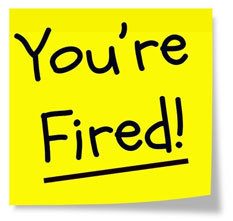Nick Usborne's Blog, page 20
March 4, 2015
Why strong subject lines are killing your email marketing.
 High open rates are not the most important thing about email marketing.
High open rates are not the most important thing about email marketing.
Nor are click-through rates or conversion rates.
These are not the metrics to watch.
There is only one thing you really, really need to watch. And it’s not even a metric.
The thing to watch is your reputation.
Without a solid and positive reputation for delivering high-value, honest and useful information through email, you’re dead in the water.
Not even the best subject line will save you.
Let’s look at how this might play out, in two scenarios.
Scenario 1…
I sign up for a newsletter on a company’s website. They have promised me the opportunity to stay ahead of the curve in an area of my life that’s really important to me. I’m persuaded to let them into my email inbox.
Keep in mind, this is my personal inbox. It’s the same place I get email from family and friends.
Anyway, after subscribing, I eagerly open the first few emails from the company. I’m anxious to improve my knowledge in this area of my life.
Those first emails set the tone. I’ll quickly learn whether or not I did the right thing in giving the company my email address.
In this scenario, the company is pretty sophisticated and very much driven by metrics. They want high open rates, high click-through rates and high conversion rates.
So they use every trick in the book to drive these metrics higher. They’re also pretty keen to sell me some of their products or services, right out of the gate.
Yes, they share some free information with me, just like they promised. But what they’re really saying is that to get the really good, valuable stuff, I’ll have to take out my credit card and buy something.
As a consumer, I’m not totally naïve. I knew these guys had stuff they would want to sell me when I signed up.
But…they moved awfully fast. And they pushed awfully hard.
The outcome?
Loss of reputation.
I stop opening their emails because I know they’ll just keep pushing. I don’t trust them anymore. Their reputation is in tatters.
And I probably won’t be alone in how I feel and in what I do. As the company sees their open rates fall, they’ll start writing “better” subject lines, and more urgent calls to action.
The trouble is, by doing that, they’re just making things worse.
Now let’s look at Scenario 2…
Same thing. I sign up for the company’s e-newsletter.
This time, they send me some really, really useful stuff each week.
Amazingly, they don’t try to sell me anything. It’s all give, give, give.
Pretty soon, I’m loving these guys.
Interestingly, their subject lines are horrible from an “expert” point of view. But that’s fine. No problem. Because as soon as I look in the “From” column and see the company’s name, I click to open the email.
Open rates are not about clever subject lines. They’re about the reputation of the sender…the name in the “From” column.
After several weeks I kind of wish the company would pitch me something. Based on the value of the free information they give me, their paid services or products must be awesome.
Maybe, after a couple of months, they’ll start adding a quiet link in their newsletter, so I can click through to one of those products or services.
Or maybe they won’t have to do even that. Maybe I’ll just go to the website on my own and start buying stuff.
The company wins in this second scenario because they have worked hard to develop a stunning reputation.
The direct response experts among you might be thinking, “Sounds cute Nick, but we have the metrics to prove you wrong. The harder we push, the more money we make.”
I’m sure you do.
In the short-term.
But as you lose more and more people from your list, because you pushed too soon and too hard, how much time, energy and money is it costing you to keep filling the “hopper” with new names and email addresses?
The faster you burn your subscribers, the faster you have to feed the front end.
Instead, how about building a massively positive reputation among the subscribers you already have?
How about having them watch for your next newsletter, wishing it would come sooner? How about having them think you are the most awesome, trustworthy and generous company on the planet?
I worked on this second scenario with a company a few years ago.
With new subscribers, we waited four months - sending out issues once a week - before we added the first product link to the newsletter.
We were going to wait a little longer. But we started getting emails from our subscribers, and they were complaining that we were making it too hard for them to find our products because we didn’t link to them from our emails. They had to go find them on the website on their own.
As complaints go, that was a pretty nice one.
The campaign was all about building reputation.
Do the same, and your subscribers will be eager to buy. They don’t need to be pushed or cajoled or teased with overblown promises and urgent text links.
So here is the thing…
The more attention you are paying to your subject lines with your email marketing, the more likely it is you’re on the wrong track…pursuing Scenario 1 instead of Scenario 2.
You’re burning reputation instead of building it.
About the author: Nick Usborne is an online writer, copywriter, author and coach. Read more…

If you found this post helpful, sign up for my e-newsletter and get a free copy of my 35-page guide...
Writing For The Web #1 -- 7 Challenges every Writer and Copywriter faces when writing for the Web.
Sign up and I'll send you the link for the download, and then you'll receive my most recent post as part of my e-newsletter every Tuesday morning.
Sign Up for my Excess Voice Newsletter...
Name:
Email:
0 subscribers
We respect your privacy
Email Marketing by GetResponse
(Your email address will be used only for the purpose of sending you this newsletter, and you'll be free to unsubscribe at any time.)
February 22, 2015
Why I became a long-tail keyword junkie.
 It used to be easy to win with keywords.
It used to be easy to win with keywords.
Go back ten years and everything was different. If you spent a little time learning the rules, and had access to a decent keyword research tool, you could get yourself placed high up on page one of the Google search results almost every time.
Why was it so easy? For a few reasons.
First, most internet marketers didn’t have a clue when it came to keywords. So with a little knowledge and the right tools you could beat them every time.
Second, there were a lot fewer websites back then. Today? Tens of millions more websites and who knows how many blogs.
Third, Google’s algorithms were a lot less complex and sophisticated. So if you knew the rules, you were good to go.
Back then a few keywords smarts could translate into making a lot of money.
And then came Google’s Panda update. And then Penguin. And then Hummingbird, which was less of an update and more of a complete engine change.
Why did they do this? Because while most of us were simply following the rules, a significant number of people and companies were manipulating those rules. They were gaming the system.
Google wanted to punish the bad guys, the bad players. They wanted regular web users to find quality content on page one of the search results, not the stuff that had been manipulated to beat the system.
Google was taking action to protect the value of its own service.
And they succeeded in doing just that. (They ended up inadvertently punishing a lot of good guys too, but that’s another story.)
The outcome is that getting listed on page one of the Google search results is now a whole lot harder.
Even 8 years ago I could get listed on page one for my hobby site about coffee with the single search term, “coffee”.
Not any more. Not in my wildest dreams.
But I can still get on page one with a term like, “How can I descale my Keurig K-Cup brewer?”
That’s a much longer keyword, or key phrase. It’s referred to as a long-tail keyword.
Here is another example, from another industry.
A primary or top-level keyword for a search might be, “hotel in Cancun”.
But that’s a very competitive term. It puts you head-to-head with companies like Expedia and Priceline.
A long-tail and related keyword or phrase might be, “pet-friendly hotels on the beach in Cancun”. Much less competitive. Much more likely to give you a page one result.
A long-tail keyword is, as its name suggests, longer. It contains several words. It is also used by fewer people when searching on Google. The upside is that it’s much less competitive.
And this is why I’m a long-tail junkie.
I can no longer win with the primary keywords. But I can win by living in the long-tail.
But what about the downside? After all, if fewer people use the term, fewer people will find you on Google and come to your site.
True. Which is why I now have well over 1,000 pages on my coffee site. If you want to win with the long tail, you have to write a lot more high-quality pages or posts.
There is no way around that.
But that’s exactly what I do. And that’s why my coffee site now gets more traffic than ever before.
It has been suggested to me that by pursuing the long tail I am somehow marginalizing my site, being pushed out to the edges, and perhaps delivering less value to my readers.
I disagree. First of all, I still create pages optimized for those primary keywords, like “coffee”. I just don’t expect to get much direct traffic to them from Google.
That core information on the topic still exists on the site.
And by creating so many pages optimized for long-tail keywords, I think I’m actually adding tremendous value to my readers by delving deeper into the topic and delivering a lot more detail.
That’s how I see it, and it’s working just fine so far!
About the author: Nick Usborne is an online writer, copywriter, author and coach. Read more…

If you found this post helpful, sign up for my e-newsletter and get a free copy of my 35-page guide...
Writing For The Web #1 -- 7 Challenges every Writer and Copywriter faces when writing for the Web.
Sign up and I'll send you the link for the download, and then you'll receive my most recent post as part of my e-newsletter every Tuesday morning.
Sign Up for my Excess Voice Newsletter...
Name:
Email:
0 subscribers
We respect your privacy
Email Marketing by GetResponse
(Your email address will be used only for the purpose of sending you this newsletter, and you'll be free to unsubscribe at any time.)
December 8, 2014
To do your best work, you have to like your client’s products.
 This is true whether you are writing copy or writing content.
This is true whether you are writing copy or writing content.
The more you like the product you’re writing about, the better the job you will do.
Conversely, if your next gig is on a product, service or topic you don’t like, you’ll find it impossible to do your best work.
In other words, if you think the product is cr*p, you’ll be hard pressed to do a good job promoting it.
Sure, you’ll be professional about it. You’ll put in the hours and apply all your skills the best you can. But I bet your writing won’t shine as brightly as when you are writing about something you think has real value.
If what I say is true - and it is - what does this mean for your work as a freelancer?
It means that you should always seek out assignments you’ll really enjoy working on. It means you should be picky about the companies you work with. It means you should deliberately target only those clients that enable you to write about products and services worthy of respect.
At this point you might be thinking, “Sure Nick, sounds good in principle. But I have bills to pay and I can’t be that choosy.”
But here is the thing...
Your reputation will always be based on the quality of your work.
The more often you do less than your best, writing about products or services you don’t believe in, the faster your reputation will fall.
But if you always write about things you feel you can wholeheartedly support, your work will improve and your reputation will grow faster.
As I have written elsewhere, you can build a life-long reputation as a copywriter on the back of a single, outstanding piece of work. But you can’t do the same with 1,000 pieces of mediocre work.
Think about that for a moment.
If you love writing about consumer goods, for example, stick with that. And look for companies that make products you really believe in.
If you enjoy writing about office equipment, find the companies that make what you consider to be the best office equipment.
If health food is your thing, seek out the companies that sell the very best health food.
I know several A-list copywriters who have basically built their careers on one or two big successes. Not everything they do is as good. Nor does it need to be. Everyone remembers that great job they did on those one or two projects.
But nobody remembers the 1,000 so-so jobs the B-list copywriter did.
As a result, it makes sense to seek out clients for whom you can do your very best work. And a big part of that process is to make sure that the client is selling products or services you feel comfortable with.
This is a strategic choice. Your choice of the niche, clients and products you work on will determine your future success.
In other words, being a successful copywriter is not about vacuuming in every decent-paying gig you can get your hands on.
It’s about being highly selective. Working on jobs that give you the best chance to shine at your brightest. Picking clients that are good to work with.
Most copywriters don’t take this strategic route. They take the vacuuming route.
My advice to you is to build a brighter and more lucrative career by focusing on work you like and enjoy.
Always.
About the author: Nick Usborne is an online writer, copywriter, author and coach. Read more…

If you found this post helpful, sign up for my e-newsletter and get a free copy of my 35-page guide...
Writing For The Web #1 -- 7 Challenges every Writer and Copywriter faces when writing for the Web.
Sign up and I'll send you the link for the download, and then you'll receive my most recent post as part of my e-newsletter every Tuesday morning.
Sign Up for my Excess Voice Newsletter...
Name:
Email:
0 subscribers
We respect your privacy
Email Marketing by GetResponse
(Your email address will be used only for the purpose of sending you this newsletter, and you'll be free to unsubscribe at any time.)
November 20, 2014
3 Ways for online copywriters to optimize every page of copy they write.
 As an online copywriter you probably focus a lot of attention on applying your skills as a copywriter, page by page.
As an online copywriter you probably focus a lot of attention on applying your skills as a copywriter, page by page.
Nothing wrong with that. I do the same. I always want each page of copy I write to be the best it can be.
But I also have to consider three other factors that will impact the performance of my copy. In other words, online copywriting is about more than just writing words that sell.
Here are the three other factors I pay attention to. Once I have addressed them all I can finally relax in the knowledge that the page ready to be published.
1. Optimize the page for SEO and SMO.
Yes, every page needs to be optimized for the search engines, including your home pages, product category pages, content pages, subscription pages, product sales pages, and so on. This means identifying a strong key phrase for each page and including it in the title, the meta tags, the headline and the body copy.
I also optimize the page for SMO…that means Social Media Optimization. To do this I’ll make sure that my headline is not just informative, but is also shareable.
For example, the first draft of my headline for this post was:
- Online copywriters also need to be site optimization experts.
It’s a decent, informative headline for a page of content. But it wouldn’t do well in social media.
So I changed it to:
- 3 Ways for online copywriters to optimize every page of copy they write.
By adding a digit to the front of the line, and promising “3 ways”, I have made the line more intriguing, more likely to get clickthroughs from social media sites, and more likely to be shared.
2. Optimize for scannability and readability.
It’s not enough simply to write well. You also have to understand your reader’s likely behavior when coming to the page.
This is becoming more and more important as people turn away from desktop machines and use their mobile devices as their primary way to access the web.
When someone is waiting at a bus stop and taking a quick look at your page, what do they see? Do they see a solid block of text? Or do they see images, a video maybe, subheads and other layout devices that make it easy for the reader to scan the page without necessarily having to wade through it, word by word?
You have to make your page easy on the eye, and easy to “get” and understand, whether your reader is sitting in a comfy chair at home, or just stepping onto that bus.
BTW – including either an image or video on your page will not only make it more attractive, but will also make it do better through social media.
3. Optimize for clickthroughs.
Put simply, if someone comes to your page and then leaves without clicking on anything, you failed.
Maybe that click is on an ad. Or on a link to another page on the site. Or it’s a buy button. Or a subscribe button.
One way or another, your page has a purpose. If that purpose, for example, is to get people to click through to a subscription page, then you have to focus a lot of attention on making that happen.
This will impact how you write the copy itself. It will impact the layout of the page. It will impact the words you use in the link or on the button. It will even impact the background color of the button.
Paying attention to optimization adds value to your services as a freelancer.
A lot of online copywriters simply offer copywriting services.
But you’ll make yourself a lot more attractive to clients, and you’ll be able to charge more, if you present your copywriting skills within a broader promise of page optimization.
After all, it's optimization that the client really wants.
They want each web page to fulfill its purpose and maximize results.
About the author: Nick Usborne is an online writer, copywriter, author and coach. Read more…

If you found this post helpful, sign up for my e-newsletter and get a free copy of my 35-page guide...
Writing For The Web #1 -- 7 Challenges every Writer and Copywriter faces when writing for the Web.
Sign up and I'll send you the link for the download, and then you'll receive my most recent post as part of my e-newsletter every Tuesday morning.
Sign Up for my Excess Voice Newsletter...
Name:
Email:
0 subscribers
We respect your privacy
Email Marketing by GetResponse
(Your email address will be used only for the purpose of sending you this newsletter, and you'll be free to unsubscribe at any time.)
November 6, 2014
Love your message, and watch your freelance business grow.
 I have been saying this for years, and have woven the thought into various talks I have given, webinars I have created and posts I have written.
I have been saying this for years, and have woven the thought into various talks I have given, webinars I have created and posts I have written.
But I have never written a single post that focuses solely on the power of finding the right message for your freelance business.
So here goes. Here’s what I want you to do…
Stop trying to sell yourself.
And start selling a message that excites you.
Selling yourself is really, really hard. Emotionally it’s hard to stand up or get on the phone and sing your own praises. Most of us feel uncomfortable doing that. We do it very badly, if we do it at all.
Also, trying to sell yourself and your expertise is a terrible way to differentiate yourself from other freelancers.
For example, a freelance copywriter might say, “I specialize in B2B copywriting.”
Well, good luck with that. Thousands of other freelance copywriters say exactly the same thing.
Go to 20 random freelancers’ websites and I bet most of them say something along the lines of “This is who I am, here’s what I do, and I’d be really grateful if you would give me some work.”
That’s not a very powerful way to attract good clients.
The idea of selling your message instead of your product or brand is not exactly new. Big companies have understood the distinction for a very long time.
McDonalds doesn’t sell burgers, they sell happiness.
Red Bull doesn’t sell an energy drink, they sell excitement.
Denny’s doesn’t sell its food, it sells nostalgia.
It’s just as well, because McDonald’s burgers aren’t exactly top drawer. Red Bull tastes just plain weird. And Denny’s isn’t the first place you’d think of for gourmet food.
These companies understand that it’s their message that sells, not their products.
It’s not just companies that understand the power of a strong message.
A certain politician did rather well with the phrase, “Yes We Can”.
Obama didn’t sell the American public on his qualifications. He sold them a message.
It’s the same for freelancers.
Back in the late 1990s I was invited to give a one-hour talk at a web marketing conference. I had never spoken at a conference before. Never done a PPT presentation before. I didn't have a business name, or a website, or a business card, or any clients. I had just started.
After I finished my talk I picked up my first three clients from that audience.
How did I do that? I did it by sharing a message I felt passionate about. I didn’t say a word about myself or my services. (Which was just as well.)
Here’s the message I shared:
“Writing for the web is different, and most of you guys are getting it wrong.”
That message resonated with a lot of people in the audience. Three of them agreed strongly enough to give me projects on the spot.
I have been doing the same thing ever since. I never try to sell myself, but always work hard to sell a compelling message.
There are a few things you need to understand about creating a powerful message.
1. Your message must be different
Back in the late 1990s I was pretty much the only person saying that writing for the web was different. As a result, there was something fresh and new about what I was saying to people.
You need to do the same. Whatever your industry niche or writing specialty, you need to find a message that isn’t mainstream. It has to be something that helps you stand out from the crowd.
2. Your message must resonate and touch on a problem that needs to be fixed.
Your message won’t work well for you if it doesn’t resonate with your prospective clients. They have to recognize what you’re saying as being true.
Your message also needs to touch on a problem they know needs addressing. If they can’t join the dots between what you’re saying and a problem they need solving, they they’ll have no reason to hire you.
3. Your message must be something you feel genuinely passionate about.
If you are bored by your message, or don’t really believe in it, or don’t feel excited by it, the whole thing will fall flat.
Conversely, if you are truly excited by your message, that enthusiasm will become infectious. People will really want to work with you if they feel you bring genuine enthusiasm to the project.
Here’s another example of a message I have been using…
As some of you may know, I’m a big coffee fan.
I have combined my interest in marketing and my love of coffee in a side business, where I help coffee companies market their products. You can see my site at ZeroDecaf.com.
My message on the home page is, “Because decaf marketing doesn't work.”
In other words, marketing without any zip won’t do much to sell your coffees.
Yes, I can get really enthusiastic about that message. Yes, it addresses a real problem, because a lot of companies use a low energy, decaf approach to marketing their coffees. And they know it’s a problem. And no, other coffee marketing groups are not saying the same thing. So I get to differentiate myself.
Whatever I do in business, I’m all about the message.
So now it’s your turn.
What message are you going to create and promote?
Get it right and you’ll find it a whole lot easier to market your freelance business.
About the author: Nick Usborne is an online writer, copywriter, author and coach. Read more…

If you found this post helpful, sign up for my e-newsletter and get a free copy of my 35-page guide...
Writing For The Web #1 -- 7 Challenges every Writer and Copywriter faces when writing for the Web.
Sign up and I'll send you the link for the download, and then you'll receive my most recent post as part of my e-newsletter every Tuesday morning.
Sign Up for my Excess Voice Newsletter...
Name:
Email:
0 subscribers
We respect your privacy
Email Marketing by GetResponse
(Your email address will be used only for the purpose of sending you this newsletter, and you'll be free to unsubscribe at any time.)
October 4, 2014
Why a shared vision works better than a style guide.
 Work with any company of a reasonable size and you’ll likely be presented with a style guide.
Work with any company of a reasonable size and you’ll likely be presented with a style guide.
Style guides for writers can be quite long. They give you instructions on the length of headlines, the use of images and other visual content, the number of words you need to write, the phrases you must use and mustn't use, the tone of voice you should aim to achieve, and so on.
Honestly, they are a nightmare. A pain in the rear for any self-respecting writer or copywriter.
So why do companies create these ghastly guides? Well, they are aiming for consistency in the writing on their websites. They want everything to look much the same and to be written with more or less the same tone of voice.
Plus there is often some nonsense put in there by their lawyers.
I get that. I understand the challenge of maintain a consistent voice across all your online media properties when you have dozens or maybe hundreds of different writers involved.
I just don’t think ramming a style guide down writers’ throats is the best way to achieve the result companies are looking for.
What do I suggest as an alternative?
What would be nice is if someone high up in the company had the talent and courage to present a common vision and voice for the company that could be expressed in its marketing across all media, offline and online.
This person will often be one of the founders, or at least someone who remembers why the company was founded in the first place.
He or she should remember the driving passion and force that pushed them through the early years. She should remember what they believed in. She should try to recall how they talked about their company in those early days.
And then she should share that vision with every single person in the company, including any freelancers hired for the purpose of writing their website, social media pages and so on.
And no, this should absolutely not be a vision statement created by a committee and approved by the company’s lawyers. That’s just another layer of BS.
Nor should it be a statement that reflects where the company wants to be in three years’ time.
This should be a statement that is drawn from the first few months of the life of the company. It should express its purpose for being. It should be simple, heartfelt and clear. No layers of marketing BS.
If you can achieve that, you’ll probably then find that your employees and the freelancers who work with you will be delighted to jump on board and share that message with your customers.
If your message is genuine, inspirational and true, your employees will probably want to have it printed on t-shirts. They’ll be proud to share your vision.
And once you get to that point, you can discard most of your style guide for writers. Sure, some technical and legal stuff will remain, but the “on message” part can be dumped.
You can dump it because everyone now knows what the message is, what the tone of voice is, what the company’s vision is.
Your writers are now enthusiastic advocates for your company. You no longer have guide and corral them into saying the right thing, or box them in, because they’ll know what to say, naturally.
Summing up, style guides for writers are no substitute for a clear, genuine and clear company vision.
About the author: Nick Usborne is an online writer, copywriter, author and coach. Read more…

If you found this post helpful, sign up for my e-newsletter and get a free copy of my 35-page guide...
Writing For The Web #1 -- 7 Challenges every Writer and Copywriter faces when writing for the Web.
Sign up and I'll send you the link for the download, and then you'll receive my most recent post as part of my e-newsletter every Tuesday morning.
Sign Up for my Excess Voice Newsletter...
Name:
Email:
0 subscribers
We respect your privacy
Email Marketing by GetResponse
(Your email address will be used only for the purpose of sending you this newsletter, and you'll be free to unsubscribe at any time.)
September 29, 2014
When social media over-promises.
 This morning I saw a post on Google+ from a web marketing company I follow.
This morning I saw a post on Google+ from a web marketing company I follow.
The post had a headline and about five lines of text. It promised me information that could dramatically improve my web marketing efforts. It was well written and compelling.
So I clicked the link and was taken to the article on the website.
The article was a crashing disappointment. Just basic information that pretty much any online copywriter already knows.
It’s not that the article was bad. It might be useful for someone who had just begun studying the craft of online writing. But that’s not what was sold in the Google+ post.
This is happening more and more. Social media updates over-promise, and the website content they link to under-delivers.
I have stopped following a number of companies for this reason. It’s really annoying to be tricked into clicking through to an article or post that proves to offer far less than I was led to expect.
This is a problem because it diminishes the value of brands.
My high opinion of several companies has been significantly reduced. By using social media these companies have caught my attention more often, but then mismanaged the opportunity by delivering mediocre web content.
Instead of saying, “Hey, look, our brand is even better than you thought!” They are saying, “Hey, look, our brand is becoming really mediocre and disappointing!”
Why is this happening?
It’s because social media has become a place where you have to speak big and loud in order to be seen or heard. Everyone’s social media streams are so busy, and moving so fast, marketers are compelled to “shout” if they want to be noticed.
In other words, if you want to succeed on social media, being quiet and ordinary won’t cut it.
This leaves us with only one option if we want to cure this “over-promising” problem. We have to increase the quality and value of the content we link to.
You can make big promises in social media, but then you have you over-deliver on your website as well.
This is a bit of a no-brainer. So why doesn’t every company over-deliver on its website as well as in its social media streams?
Simple answer: Quality web content costs a lot more money than mediocre content.
Companies go for the short-term win in social media, while undermining the long-term value of their brand on their websites.
This is a terrible way to run a business. Most of any company’s profits are to be found in the future. The combined profits of the next ten years massively exceed the level of profits you can make in the next ten weeks. The true value of your brand resides in the future, not the present.
So when you over-promise in social media, and under-deliver with your website content, you are essentially exchanging a small short-term gain for a massive loss in future profits.
Like I said, a terrible way to run a business.
About the author: Nick Usborne is an online writer, copywriter, author and coach. Read more…

If you found this post helpful, sign up for my e-newsletter and get a free copy of my 35-page guide...
Writing For The Web #1 -- 7 Challenges every Writer and Copywriter faces when writing for the Web.
Sign up and I'll send you the link for the download, and then you'll receive my most recent post as part of my e-newsletter every Tuesday morning.
Sign Up for my Excess Voice Newsletter...
Name:
Email:
0 subscribers
We respect your privacy
Email Marketing by GetResponse
(Your email address will be used only for the purpose of sending you this newsletter, and you'll be free to unsubscribe at any time.)
August 28, 2014
Social media isn’t just a hook for your website.
 Here we are, several years into the rise of social media, and companies still have no clue about what the social web is about.
Here we are, several years into the rise of social media, and companies still have no clue about what the social web is about.
When I scan through a company’s Facebook page, for example, what I see for the most part are links to its website.
Someone at the company wants to drive traffic to a particular page. So they send out a tweet, or create a Facebook update, or a Google+ post. The social media content is often automatically created, drawing the title and a photo from the site’s web page.
In other words, the social media update is simply a link back to the site, with no intrinsic value of its own.
That’s not social media content. That’s just a hook.
When all you are doing is linking back to your website, you’re missing the point. Your “friends” will soon tire of your antisocial efforts. They won’t stick around if all you do is try to hook them and reel them over to your website to buy something.
If you think about it, you’re not being “social” at all. You’re simply being promotional.
But it doesn’t have to be that way.
You should create social content that is unique content. You can take a photo and upload it to your favorite social media site. Or a video clip. Or a short text-only post. You can even…gasp…link to great content that resides on a website that isn’t yours.
As with all content, social media content should be original, high-quality content…not derivative or a duplicate of what you already have on your website.
You should also be available to get into conversation with people on your social media profiles. Be there. Engage with people. Answer questions. Acknowledge the value they bring to your page or channel.
“But where,” asks the CEO, “Is the ROI for social media if we don’t use it as a promotional tool to drive traffic to our website?”
The value resides within the social media pages themselves. This is where you make friends, build trust, undo wrongs, improve perceptions and build loyalty.
This is where you build deeper relationships with your customers and prospects. This is where you create unique content that is so great, your followers and friends want to share it across their own social media pages. And so on.
How many likes or retweets do you get when all you do is try to hook people over to a sales page on your website? Not many. I certainly don’t want to share your sales page with my own friends and followers.
But if you give me something unique and interesting to see in your social media streams…and if its value is intrinsic, and it’s not about promoting something…then I’ll be happy to share.
I know, this all sounds obvious. But take a few minutes to view some big brand social media pages and for the most part all you’ll see is hooks and promotion.
And, of course, there is nothing wrong with the occasional link back to your site. That’s OK. Just don’t let those links dominate your social streams.
There only two things you need to get right if you want your business to be a social success online.
First, create unique, quality content that delights your audience and screams to be shared.
Second, jump into the stream and get into real-time, authentic conversations with our friends and followers.
Finally, be patient. You can’t rush relationships.
Go easy on the real-time hooks, and invest more in long-term social.
About the author: Nick Usborne is an online writer, copywriter, author and coach. Read more…

If you found this post helpful, sign up for my e-newsletter and get a free copy of my 35-page guide...
Writing For The Web #1 -- 7 Challenges every Writer and Copywriter faces when writing for the Web.
Sign up and I'll send you the link for the download, and then you'll receive my most recent post as part of my e-newsletter every Tuesday morning.
Sign Up for my Excess Voice Newsletter...
Name:
Email:
0 subscribers
We respect your privacy
Email Marketing by GetResponse
(Your email address will be used only for the purpose of sending you this newsletter, and you'll be free to unsubscribe at any time.)
August 9, 2014
Fire your two worst clients, twice a year.
 I spent some time with a fellow freelancer recently, and he showed me a spreadsheet of his recent and current clients.
I spent some time with a fellow freelancer recently, and he showed me a spreadsheet of his recent and current clients.
Better still, he showed me how profitable each of those clients were.
I have created spreadsheets like these myself, and was fascinated to see how similar his was in terms of the spread of profitability.
Let me explain.
On his spreadsheet he had a couple of really profitable clients, several middle-range clients, and a couple of clients that were barely profitable at all. His mix of clients was very similar to what I have seen in my own career as a freelancer.
So I asked him the obvious question, “The two least profitable clients take up way too much of your time for too little reward. So why not fire them?”
Good question, right?
Well, it turns out that these two clients are old clients. He has worked with them for years. And while his rates have risen over the years, the prices he charges these two clients have remained lower.
He also feels a sense of loyalty to these clients, because they were with him during the tough, early days, when he was trying to earn enough to pay his rent each month.
I get that. I understand his reasons.
But if you want your freelance business to grow, you can’t afford to spend too much time on barely profitable work. You need to do one of two things. First, you can renegotiate the price. Second, you can fire the client.
If the work is good, and the client is easy to work with, you should try the first option. A smart client will understand that your rates have to go up from time to time, and will agree to that increase in fees.
But in my experience, even the smartest clients feel a lot of resistance when faced with a fee increase.
If that is the case, you need to say goodbye to that client, and find a better one.
I shared this argument with my freelancer friend, and while he agreed with my reasoning, he felt very uncomfortable with the thought of pulling the trigger and letting two clients go.
Why? For the same reason that every freelancer worries about letting a client go. What if next month turns out to be a bad month? What if they need that client’s fees to pay the bills? In other words, we feel insecure. We try to hang on to every source of revenue we can.
I understand that too. I have been in the same place, many times.
But what I have learned is that in pretty much every case you would do well to ditch those two clients. Why? Because getting rid of them gives you the time to find better, more high-paying work from new clients.
As freelancers we hang on to these old clients out of insecurity and even sentimentality. There are no sound business reasons for spending time on that kind of work.
You have to maximize your revenues. And that means firing those bottom-rung clients and using the time you have freed up to find better ones.
It isn’t always easy to let clients go, but this is how smart freelancers rise above the crowd and make 6-figure incomes.
About the author: Nick Usborne is an online writer, copywriter, author and coach. Read more…

If you found this post helpful, sign up for my e-newsletter and get a free copy of my 35-page guide...
Writing For The Web #1 -- 7 Challenges every Writer and Copywriter faces when writing for the Web.
Sign up and I'll send you the link for the download, and then you'll receive my most recent post as part of my e-newsletter every Tuesday morning.
Sign Up for my Excess Voice Newsletter...
Name:
Email:
0 subscribers
We respect your privacy
Email Marketing by GetResponse
(Your email address will be used only for the purpose of sending you this newsletter, and you'll be free to unsubscribe at any time.)
July 21, 2014
Power up your copywriting with causality, a strong narrative and a healthy respect for cognitive dissonance.
 In my last post I wrote about the human obsession with causality, and how copywriters can use this weakness to their advantage.
In my last post I wrote about the human obsession with causality, and how copywriters can use this weakness to their advantage.
Today we’ll move to the next stage and consider how causality is a building block of narrative.
I know…it all sounds weird. But keep reading and all will be explained. (And if you didn’t read the last post, you may want to read it now, before you continue with this one.)
Let’s work with an example.
Imagine you decide to invest in gold bullion.
Naturally, you are going to read all about the yellow metal, its ups and downs and the various forces at play that influence its price.
Then one day you read an article about price fixing, and about how gold prices are actually under the control of a shadowy force, comprised of international bankers and billionaire oligarchs.
You are immediately taken with this article.
Why? Because it delivers a simple cause for what is actually a complex issue.
This is our obsession with causality at work. Rather than struggle with the dozens or hundreds of factors that actually influence the price of gold, you have now identified a single cause. The price is fixed, rigged, artificially supressed.
Once you believe in this single cause, everything begins to make sense.
And each time you read an additional article that references gold price fixing, your belief is reinforced.
Now we have the makings of a narrative. In fact, before too long everything you read about gold prices becomes part of this narrative.
When you hear that the price of gold has changed dramatically during the course of a couple of hours…you now know the reason why. Because it’s rigged.
You no longer have to consider the myriad other reasons why the price might have moved. The true complexity of the issue has become irrelevant. You always have the answer.
After a while this narrative becomes so deeply embedded in your mind that you’ll fight tooth and nail against anyone who suggests you are wrong.
When you fight in support of your narrative, you are displaying the discomfort brought about by what psychologists call cognitive dissonance.
The fact is, we all find it very uncomfortable when our convictions…which started out as simple narratives…are challenged.
If you vote democrat, you’ll find it very hard to accept arguments from republicans.
If you support the New York Mets, nobody is going to persuade you that the San Francisco Giants are better.
If you are a fan of Apple, you are not going to listen to anyone singing the praises of Microsoft.
If you think genetically modified food is a terrible idea, you’ll close your ears to anyone who suggests it’s a great idea.
When we are asked to consider possibilities or opinions that run counter to our beliefs and familiar narratives, we feel uncomfortable. In other words, we feel cognitive dissonance.
And what does any of this have to do with the craft of copywriting?
It has everything to do with it.
Let’s say I am tasked with selling a crunchy health bar that is not only organic, but also contains zero genetically modified ingredients. It’s GMO-free. 100%.
First, as per my previous post, I’m going to point to GMO as being the single greatest threat to your health.
I’m not going to make things complicated by talking about a hundred other things that might be bad for you.
I’m giving my readers a single cause to latch on to. GMO is the villain.
I’m then going to start reinforcing this belief with a series of stories. All will point in the same direction. And a compelling narrative will be born.
I can do this within a single, long sales page. Or I can do it piecemeal, as part of an ongoing campaign, over time.
Consider what I’m doing here.
I’m not selling the crunchy health bar.
I’m selling GMO as the single cause of all your health problems. I’m giving my readers a simple answer to a vexing, complex question.
And then I am developing a narrative around that single, simple answer.
If I can do that successfully, I can then sell those health bars with the lightest of touches. “Hey, they GMO-free!”
Of course, my client’s part of the job is to find audiences that are receptive to an anti-GMO message.
In summary…
Find and know your audience.
Identify a problem they have. (They want to improve their health.)
Point to a single cause for their problem. (GMO foods.)
With that cause in mind, identify your product as the solution. (Your product is GMO-free.)
Build a narrative around that single cause that is compelling, convincing and ongoing. (21 Reasons why GMO foods are a danger to your health.)
Build it to the point that your audience feels discomfort when they are exposed to an opposing viewpoint. (Monsanto sends out a press release singing the praises of GMO.)
After that, the task of selling becomes relatively simple.
It’s simple because once you get your audience on board with a single cause and a compelling narrative, they become believers…and will stick with you and your products or services for as long as you provide a solution that matches their belief.
About the author: Nick Usborne is an online writer, copywriter, author and coach. Read more…

If you found this post helpful, sign up for my e-newsletter and get a free copy of my 35-page guide...
Writing For The Web #1 -- 7 Challenges every Writer and Copywriter faces when writing for the Web.
Sign up and I'll send you the link for the download, and then you'll receive my most recent post as part of my e-newsletter every Tuesday morning.
Sign Up for my Excess Voice Newsletter...
Name:
Email:
0 subscribers
We respect your privacy
Email Marketing by GetResponse
(Your email address will be used only for the purpose of sending you this newsletter, and you'll be free to unsubscribe at any time.)
Nick Usborne's Blog
- Nick Usborne's profile
- 6 followers



